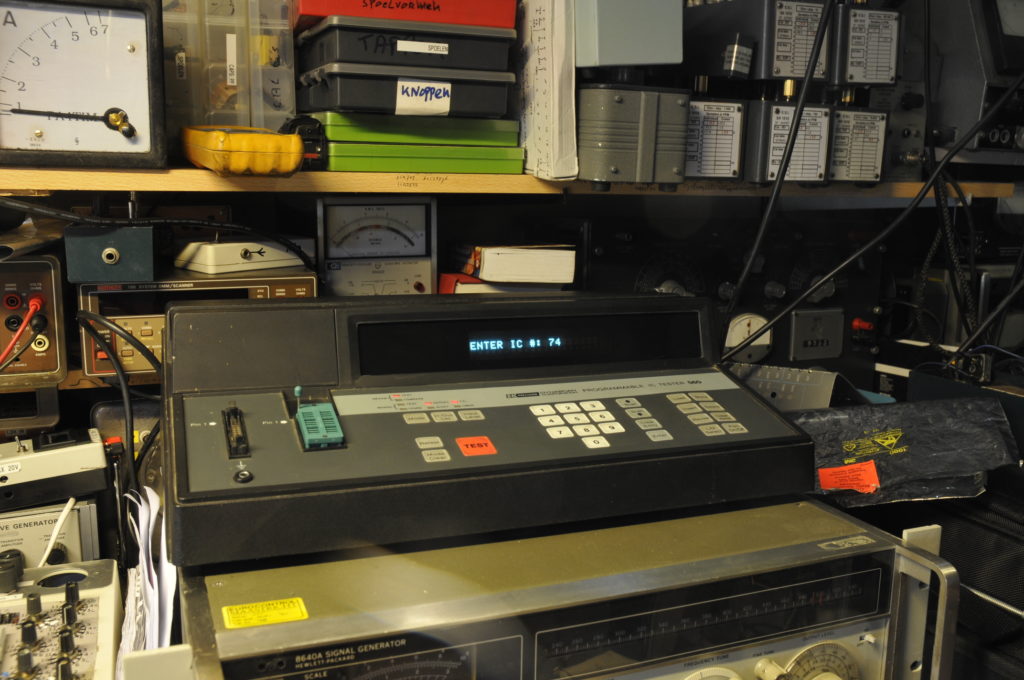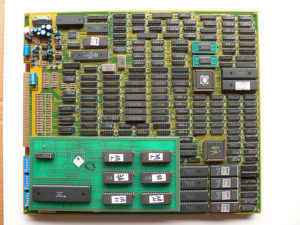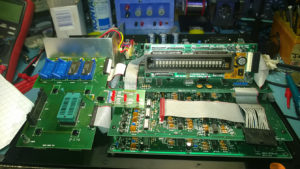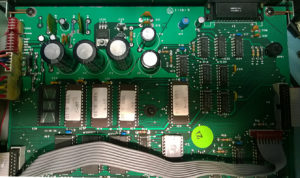This is the B&K Pecision 560 IC tester. I do not know the history. It is build around 1986 (that is the date code on the most ICs)
That time area was the rise of the computers. Everything became digital or looked that way. And in those days you needed a lot of IC’s to do that like you see on the wiki picture below.
Those IC’s are called logic IC’s. They have functions like and-, or-, nor-, xor-, nand-gates, counters, inverters, buffers, flipflops, linedrivers, multiplexers, latches and many more. They are most know as the 74, 40 and 45 series. They still are in production. They have numbers like 7402, 74193 , 4513, 4060 etc but where made in many sub-flavors like 74LS04, 74HCT04 See: https://nl.wikipedia.org/wiki/Logicafamilies
They can draw a lot of current and if there are several pcbs things can get hot inside. Normal trouble shooting was a lot of work so manufacturers searched for ways to test IC’s and whole PCBs. This is such an instrument. Later this became more and more automated and you now have setups that test a whole pcb in one time with the flip of a switch or a mouseclick. (also called a bed of nails)
The B&K is capable of testing 1 IC out of circuit. That is done by inserting it in the ZIF ic holder. But it can tests pcb’s to. Not automated but you can learn it a pcb. In situ IC’s are not easy to measure because they are connected to each other but also to gnd or Vcc. You can program cq learn it, by measuring the response of all IC’s on a pcb. It stores the results. This you do with a good workingboard as a reference. Then you can test other boards by comparing it with the data from the reference board. The connection to the ICs is made through the flatcabel and an IC clip.
Besides the internal library with 95% of the logic IC’s and things like RAM made back then (in 1986) you can program your own components and save them in the 6 eeprom holders. 4 of them are accessible from the outside. Mine has lib 3.1, I think one of the latest versions made. I do not how many IC’s are in the library but I think around somewhere between 500 and 800. Mine has 2 user EEPROMs in the extension slots. Making your own libs was only possible with the PC software. The tester has a RS232 interface for that (or a printer) According to info on forums the software is probably lost.
The blue sockets are also ZIF sockeds and hold the user programmable eeproms.
I reformed the 4 big caps to be sure and tested them. They were still like new. Had to replace a few small ones and redo some soldering. After that it worked fine. It is very fast.





